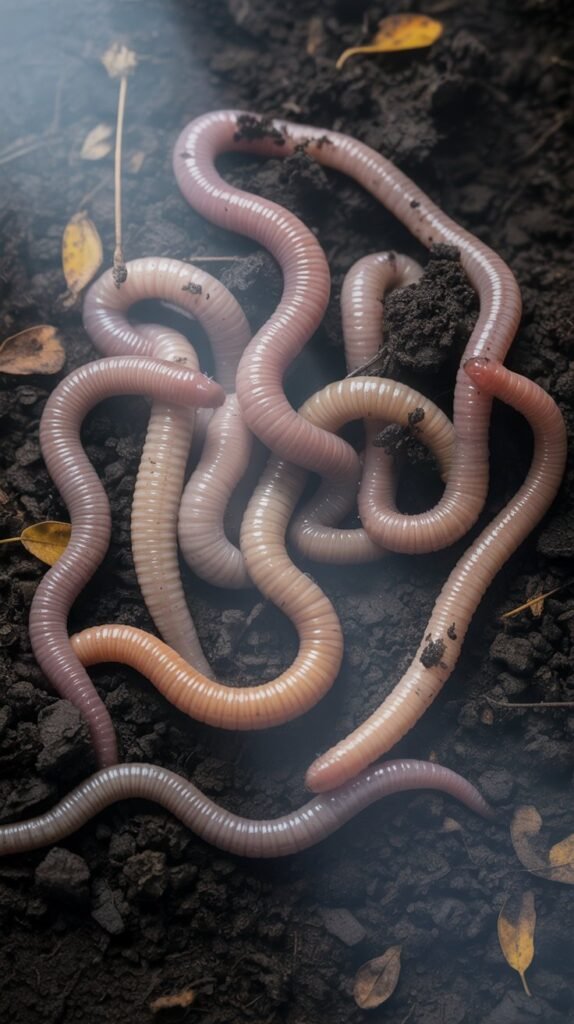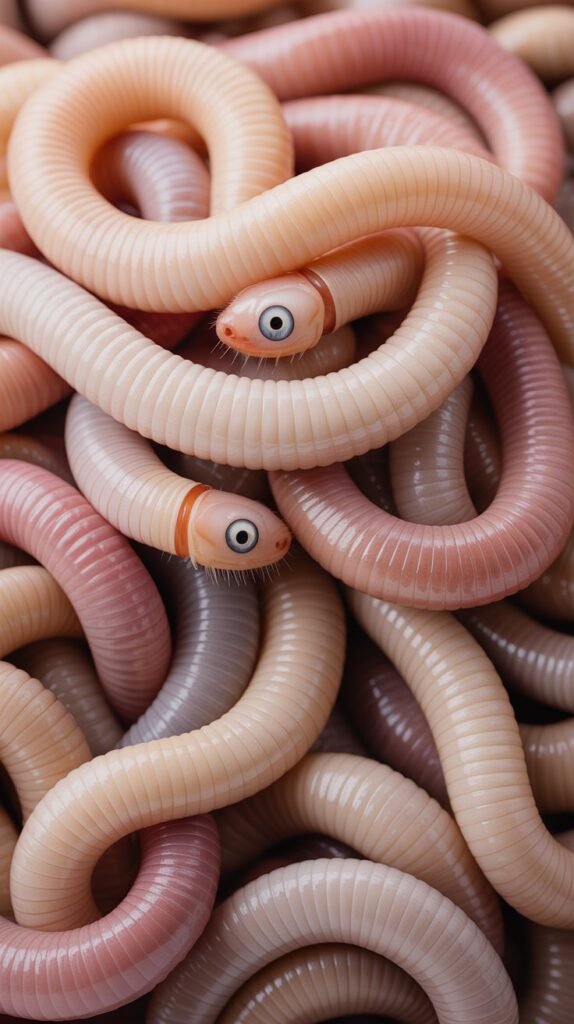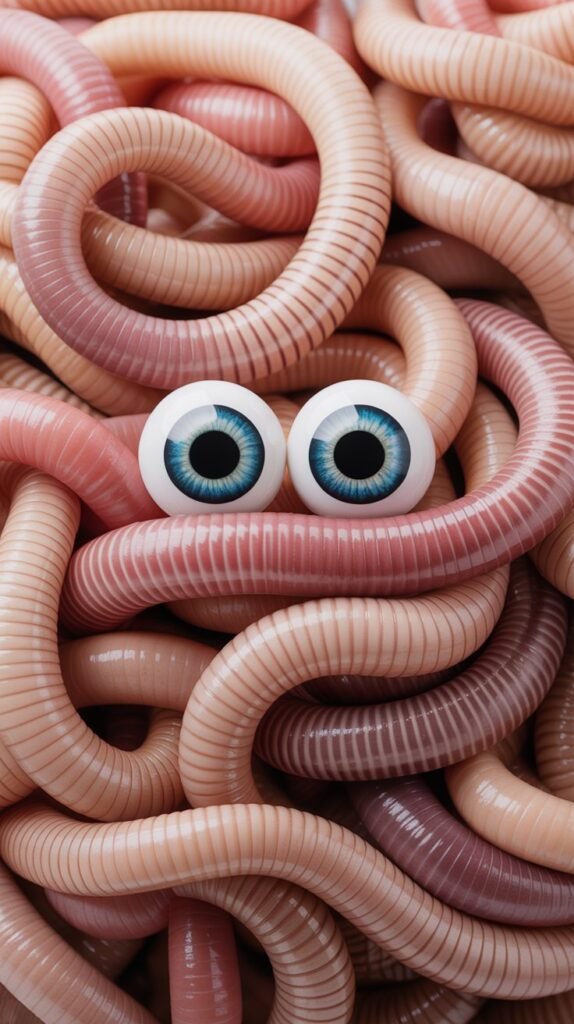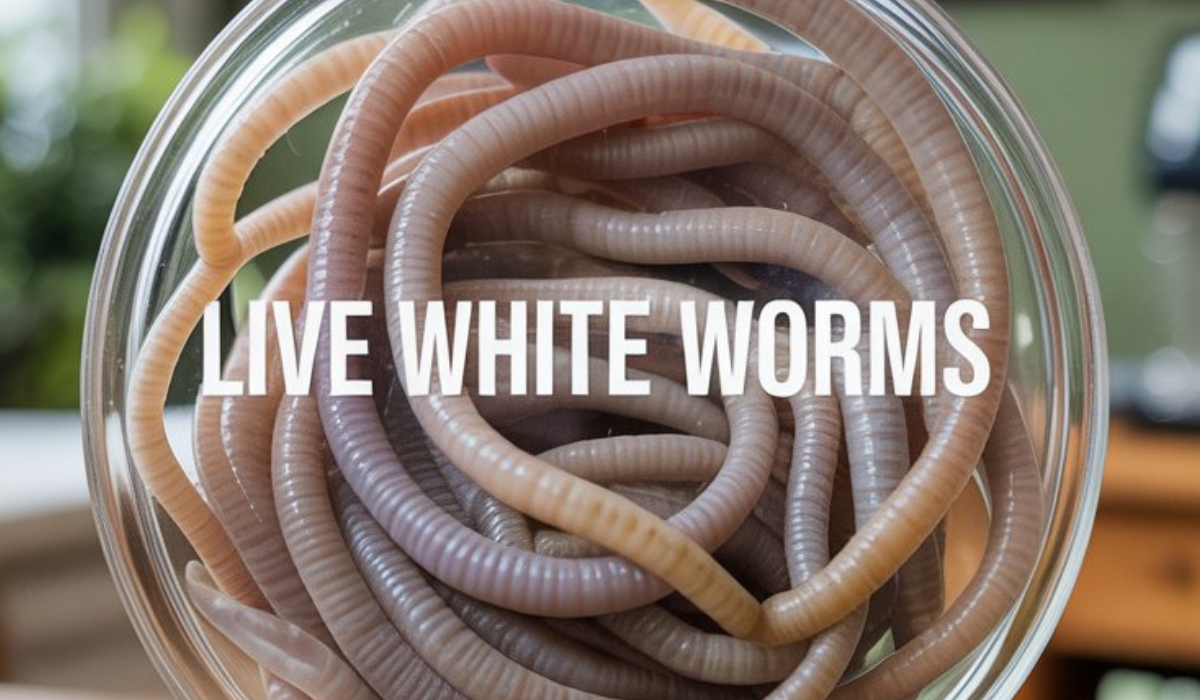Feeding aquarium fish is more than just dropping in flakes or pellets. Serious aquarists know that the secret to healthy, vibrant, and active fish lies in offering a variety of foods, including live options. One such food that stands out for its nutritional value and ease of culturing is the live white worm.
Often overlooked compared to brine shrimp or tubifex worms, live white worms (Enchytraeus albidus) are an excellent choice for tropical and cold-water fish alike. They provide a protein-rich, fatty diet that helps in conditioning fish for breeding, improving growth, and enhancing coloration.
In this article, we’ll cover everything you need to know about live white worms—from their biology and benefits to safe feeding practices, culturing methods, and FAQs.
What Are Live White Worms?
White worms (Enchytraeus albidus) are small, threadlike worms belonging to the Enchytraeidae family. They are typically 1–3 cm long, white in color, and live in moist soil environments. Unlike tubifex worms (which are aquatic), white worms are terrestrial, meaning they thrive in soil and organic matter.
In the aquarium hobby, white worms are prized as nutritious live food, especially for:
- Guppies and other livebearers
- Bettas
- Killifish
- Cichlids
- Discus and angelfish
- Fry and juvenile fish
They are particularly popular for conditioning breeding fish because of their high-fat content.
Nutritional Value of Live White Worms

One of the main reasons aquarists use white worms is their balanced nutritional profile. While they are fattier than some other live foods, their protein and fat balance makes them excellent for conditioning.
Approximate Nutritional Breakdown:
- Protein: 14–18% (on fresh weight basis)
- Fat: 14–20%
- Carbohydrates & Fiber: 5–8%
- Moisture Content: 65–70%
This composition makes them rich in energy, supporting growth and breeding success in many fish species. However, because of their fat content, they should be fed in moderation rather than daily staples.
Benefits of Feeding Live White Worms
1. Excellent Breeding Conditioner
White worms are known as a “breeder’s food.” Their high fat and protein content helps fish build energy reserves, stimulate spawning behavior, and produce larger, healthier batches of eggs and fry.
2. Enhances Growth
Young and juvenile fish grow faster with occasional white worm feedings due to their energy-dense composition.
3. Improves Fish Coloration
Fish fed white worms often display brighter and richer colors, thanks to the natural nutrients in the worms.
4. Readily Accepted by Most Fish
Almost all carnivorous and omnivorous fish eat white worms eagerly. Even picky species that refuse dry food will usually accept them.
5. Easy to Culture at Home
Unlike live tubifex worms (which are risky due to water pollution), white worms are terrestrial and can be cultured easily in soil, making them safe and sustainable for long-term use.
Risks of Feeding Live White Worms

While they are beneficial, there are a few considerations to keep in mind.
1. High Fat Content
White worms are energy-dense. Feeding them too frequently can cause fatty liver disease in fish. They should be considered a treat or conditioning food, not a staple.
2. Temperature Sensitivity
White worms thrive in cooler conditions (10–20°C). In warmer environments, cultures may die off if not maintained properly.
3. Overfeeding Risks
Uneaten worms can burrow into aquarium substrates, where they may survive temporarily. Overfeeding can foul the tank water.
4. Not Suitable for Daily Feeding
Because of their high fat levels, it’s best to feed white worms only 2–3 times a week in small portions.
How to Feed Live White Worms Safely
- Rinse Before Feeding – Remove worms from their culture medium and rinse under clean water to remove soil or contaminants.
- Feed in Small Portions – Offer only what your fish can eat in 2–3 minutes.
- Use Feeding Tools – Tweezers, feeding dishes, or worm cones can help avoid worms scattering in the aquarium.
- Combine with Other Foods – Use white worms as part of a varied diet that includes flakes, pellets, vegetables, and other live foods (like brine shrimp or daphnia).
How to Culture Live White Worms at Home
One of the biggest advantages of white worms is that they are easy and inexpensive to culture at home. With a starter culture, you can grow a continuous supply for your fish.
Materials Needed:
- Plastic container with lid
- Organic potting soil, coconut fiber, or peat moss
- Starter culture of white worms (available online or from local aquarists)
- Food (bread soaked in milk, oatmeal, or powdered fish food)
- Spray bottle for moisture
Step-by-Step Guide:
- Prepare the Container
- Use a shallow plastic container with ventilation holes in the lid.
- Add 2–3 inches of soil or peat moss. Keep it moist but not waterlogged.
- Add the Starter Culture
- Introduce the worms into the soil. Spread them gently on the surface.
- Feeding the Worms
- Place a small piece of bread soaked in milk or oatmeal on top of the soil.
- Cover with a plastic lid or piece of glass to keep moisture and attract worms to the surface.
- Harvesting
- Within a few days, worms will gather around the food. Scrape them off and rinse before feeding to fish.
- Maintenance
- Keep cultures at 15–20°C (59–68°F).
- Spray with water to maintain moisture.
- Replace the culture medium every 2–3 months to avoid mold or foul smell.
With proper care, a single culture can provide live food for months or even years.
Suitable Fish for White Worm Feeding

White worms are ideal for a wide range of aquarium fish, including:
- Guppies, Mollies, Platies, Swordtails (excellent for conditioning breeders)
- Bettas (ideal pre-spawning food)
- Killifish (a staple in breeding conditioning diets)
- Cichlids (especially dwarf species and discus)
- Angelfish (helps in egg production and fry health)
- Catfish and Loaches (bottom feeders that eagerly consume worms)
Alternatives to Live White Worms
If you don’t want to culture worms at home, there are alternatives:
- Microworms (Panagrellus redivivus) – Smaller, excellent for fry.
- Grindal Worms – A close relative of white worms, better suited to tropical temperatures.
- Brine Shrimp – Safe, nutritious, and easy to hatch.
- Daphnia – Good for digestion and water quality in fish.
- Bloodworms – High protein, but best fed frozen to avoid parasites.
Best Practices for Using Live White Worms
- Feed sparingly, no more than 2–3 times per week.
- Always rinse worms before feeding.
- Maintain multiple cultures to avoid running out.
- Use them primarily as a conditioning food before breeding.
- Store cultures in a cool, dark place for best results.
Conclusion
Live white worms are one of the best conditioning foods available for aquarium fish. They provide essential protein, fats, and energy that promote growth, enhance coloration, and encourage successful breeding. While they should not replace a balanced diet, they are an excellent supplement when used responsibly.
Culturing white worms at home is simple, inexpensive, and rewarding. With proper care, you can ensure a continuous, parasite-free supply of live food for your fish.
For aquarists who want to take their fish-keeping hobby to the next level, live white worms are a must-have addition to the feeding routine.
FAQs About Live White Worms
Q1. What are live white worms used for in aquariums?
They are used as a high-protein, high-fat live food to condition fish for breeding, enhance growth, and improve coloration.
Q2. How often should I feed white worms to my fish?
Only 2–3 times per week. Daily feeding can cause fatty liver disease in fish.
Q3. Can fry eat white worms?
White worms are too large for tiny fry, but juvenile fish can eat them once they are big enough. For fry, microworms or infusoria are better options.
Q4. How do I culture white worms at home?
Use a container with moist soil or peat moss, introduce a starter culture, and feed them bread soaked in milk or oatmeal. Keep the culture cool and harvest regularly.
Q5. Do white worms carry diseases?
Unlike tubifex worms, white worms are relatively safe since they are cultured in soil, not polluted water. However, they should always be rinsed before feeding.
Q6. What’s the difference between white worms and grindal worms?
Both belong to the same family. White worms prefer cooler temperatures (15–20°C), while grindal worms thrive in warmer tropical conditions (20–28°C).
Q7. Can I store harvested white worms?
Yes. You can refrigerate them in a damp cloth or container for a few days, but they are best fed fresh.

